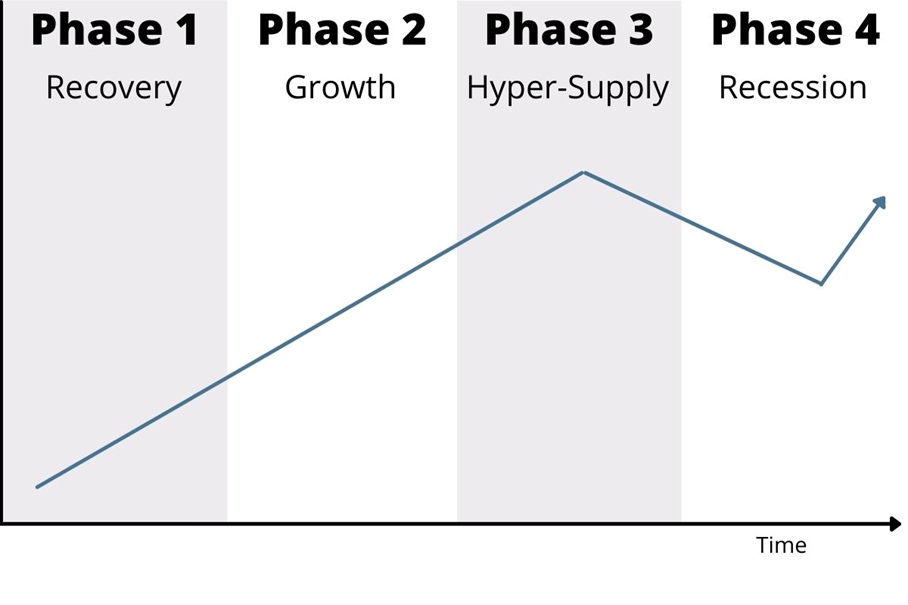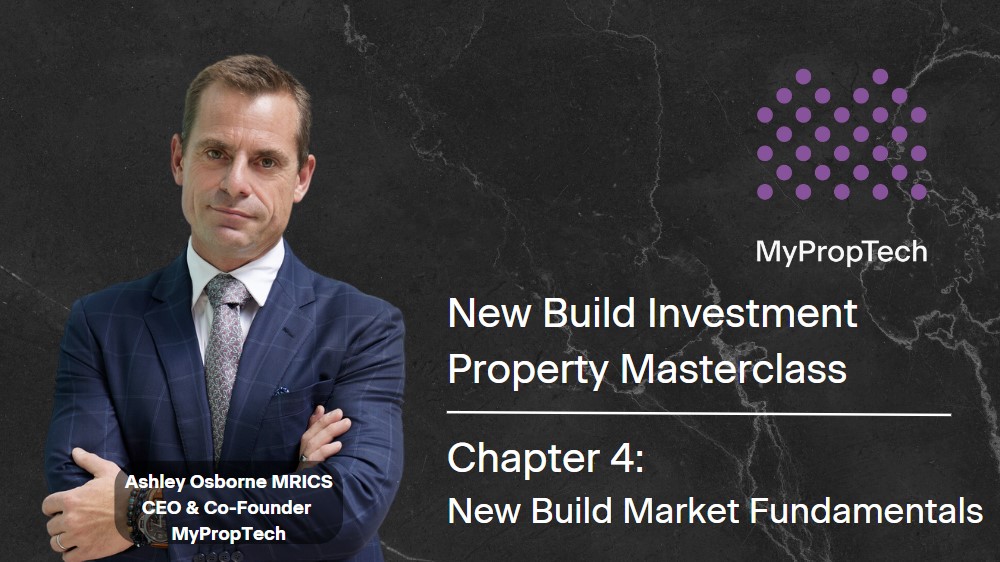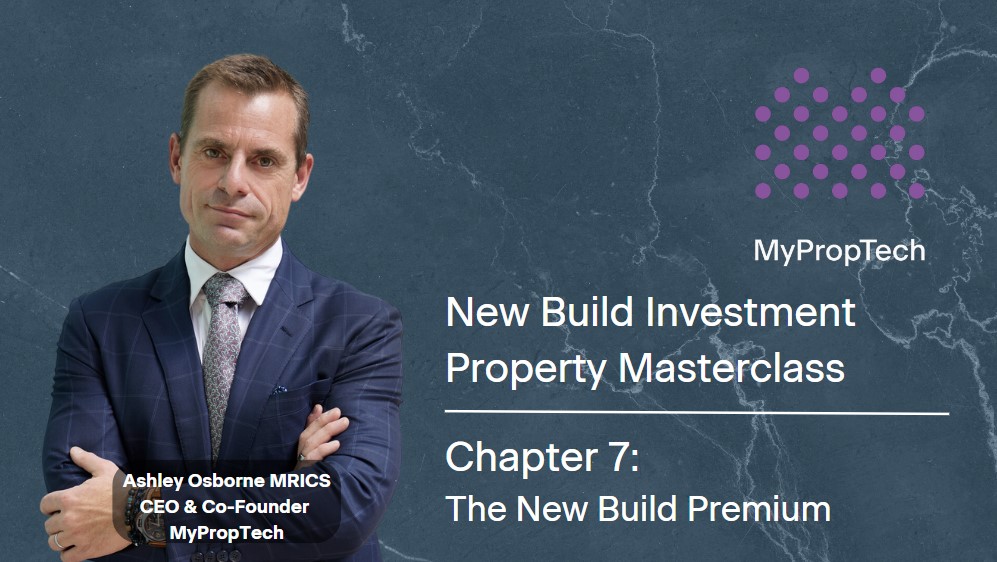New Build Investment Property Masterclass: Chapter 5 - New Build Property Market Cycle
The real estate market
The purpose of a market is to arrange for the production and exchange of goods and services. A market acts to enable producers and suppliers to determine the level of production. Price is the mechanism within a market that determines how much a given producer is willing to supply, and how much a consumer is willing to demand.
As prices vary in a market, their level sends signals to buyers and sellers, who modify their behaviour accordingly. Both buyers and sellers will always act in a self-interested way.
A perfect market
If a market is thought to be a 'perfect market' then it has several features, which include:
- Many buyers and sellers.
- High levels of transactions.
- Both buyers and sellers being in possession of sound technical knowledge of the goods or services they are trading.
- Both buyers and sellers being able to enter or leave the market at will.
- Pricing determined by competitive bidding.
- No cost to move goods and services to and from the market.
- All transactional information freely available to those who wish to participate in the market.
Under these market conditions, all market participants are only ever likely to agree on one price for a given good or service. If a good or service were to be bought and sold at a different price, then this would be considered a non-market price or an 'outlier'. There would likely have been other reasons why the buyer and seller bargained at a different price.
Many people compare the concept of a 'perfect market' to the stock market. A stock market is a highly organised market with rules, regulations, and procedures which are rigidly enforced. The reason these rules and regulations are so tightly enforced is to create a deep secondary market. Investors are willing to purchase shares after they have been issued to the initial buyer because their value is maintained. A stock market exists so that shares can be created by corporations to raise finance, and these interests can be traded.
Shares are traded on an exchange, which bridges the distance between buyers and sellers. Documenting a sale is a simple process, which can be done quickly. One of the primary objectives of the stock exchange is to provide a high level of information and research to investors. This helps to create confidence in the market.
Many of the differences between the stock market and the real estate market are obvious. In the real estate market:
- The market is far less organised than the stock market.
- Buyers and sellers are physically separated, and real estate agents have evolved to facilitate transactions.
- Information relating to historic transactions is difficult and costly to obtain, making it hard to study historic market trends.
- Buyers typically trade infrequently, and are therefore relatively uninformed.
- The transfer of ownership following a transaction is a complex and expensive process.
- The price is harder to determine and is typically a range of values based on assumptions, because the market involves the trade of multiple inhomogeneous products by participants who are not fully informed.
New-build property market cycle
Like all markets, the new-build property market moves in cycles. A combination of the demand and supply for property and the market inefficiencies and performance of the broader economy drives the new-build residential real estate.
The new-build property market cycle can be broadly categorised into four market phases. The point in the cycle dictates how much a participant is willing to buy or sell a new-build property for.
Figure 1.1: New-build market cycle

Phase 1: Recovery
The recovery phase is the first phase of the market cycle, and it follows a recession. During this point in the cycle the demand for housing is low, and there may be significant amounts of vacant housing. At this point, residential real estate prices are low.
The important point to recognise is there is no magical switch that can be turned on as the market moves from recession to recovery. It is a gradual process, driven by economic sentiment. Some people may feel the economy is recovering, while others still feel the economy is in recession.
Indicators you should look for:
- Home sales and letting rates will still be low;
- Housebuilding will be at low levels as developers will be unwilling to create an oversupply of new housing which will impact the price at which they can sell;
- Interest rates will be low;
- Media coverage will be largely negative and will forecast future declines in pricing;
- Developers will be pursuing long-term land (sites that require planning permission to develop).
Opportunities for you to consider:
- This is typically a great time for you to borrow to take advantage of low-interest rates.
- This is a good time to purchase a property that offers long-term value - as an investor, you will have the greatest negotiation leverage.
- This is the time you will want to be liquid; it is difficult to participate in the market if you do not have the cash to purchase.
- 'New-build premium' for new housing will be at the lowest point in the cycle.
- Purchase price risk will be at its lowest point in the real estate market cycle - this is the point at which you will have your greatest ability to recover from 'poor' investment decisions.
There are also some risks you need to be aware of:
- Vacancy rates for property will be high.
- Tenants will have a lot of choice and rents will be at their lowest point in the cycle, so you need to be conscious of your ability to pay your mortgage from rental income.
- It will be more difficult for you to obtain a mortgage, and banks will require a higher deposit to arrange one.
Phase 2: Growth
The market will start showing signs of growth. The broader economy will be growing at this point, the number of jobs will be growing, and incomes may also be growing as the economy recovers and new jobs are created. Economic growth will increase demand for housing, which will increase tenant demand, thus putting pressure on the small pool of rental properties available. This is the point in the cycle at which the construction of new housing increases. At this point in the cycle, investor activity will be high.
Indicators you should look for:
- Home sales and leasing activity will increase.
- House prices and rents will increase as demand increases and supply remains relatively low.
- Construction activity will accelerate.
- 'Trading' in the secondary market (second-hand property) will be high.
- There will be a general feeling of optimism within the economy and a general confidence of better times ahead.
- Developers will be buying development sites that are 'oven ready' which they can develop quickly and bring to market for immediate sale to take advantage of market conditions.
- The 'new-build premium' will expand.
Opportunities for you to consider:
- Interest rates will remain low and lending terms will begin to loosen.
- If you have an existing property, this is a good time to re-finance as the equity in your portfolio will have increased and you can lock in at lower interest rates.
- There are likely to be opportunities for new development, re-development, or acquiring properties where you can add value.
Risks you need to be aware of:
- Overpaying for property, as at this point in the cycle investors can easily get carried away with unrealistic growth expectations.
- Over-extending with leverage, as many investors will take on too much debt at this point in the cycle.
- New property will be sold based on 'future price growth' prospects.
Phase 3: Hyper-supply
At this stage in the cycle there will be a tipping point from a balanced supply to an oversupply of housing. In other words, the residential property on the market outstrips demand. This will have a moderating impact on prices, and house price growth will slow down.
At this point, new construction begins to slow. However, there is already a significant amount of 'committed work' which will flow through the system and further increase supply. Prices will typically peak at this point in the cycle, before seeing a decline.
Indicators you need to look for:
- In the development market, there will be a significant number of development sites which are on the market but are not yet sold, as the gap between landowner aspiration and developer risk appetite grows.
- There is an oversupply of housing – where supply exceeds demand, and prices stop growing and may decline.
- Rents remain high, but demand for rental property declines.
- There tends to be overconfidence in what the market is delivering, and developers are typically unwilling to discount on asking prices.
Opportunities for you to consider:
- If you are thinking of selling a property, now is the best time to do so.
Risks you need to be aware of:
- This is a bad time to buy, as there will still be a significant amount of confidence in the market. Good investors will recognise the warning signs.
- The 'new-build premium' will be at its highest point in the cycle.
Phase 4: Recession
During a recession, businesses may close and unemployment rates will rise. Ultimately, the property market will hit the bottom of its pricing at this phase in the cycle. Some investors will become financially stressed, and some will go under at this point in the cycle, because of over-exposure to debt.
Indicators you should look for:
- House prices decline as will rental rates.
- Demand for housing will decline.
- Many businesses will close down.
- Spending will slow as people lose economic confidence.
Opportunities for you to consider:
- This is a good opportunity for you to purchase from distressed sellers.
- When people sell at this point in the cycle, they typically do so because they need cash.
Risks you should be aware of:
- Not having sufficient liquidity or capital reserves could be your downfall if you are overextended.
 By
By


